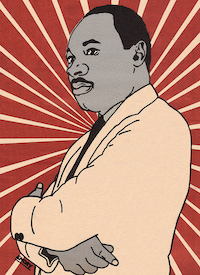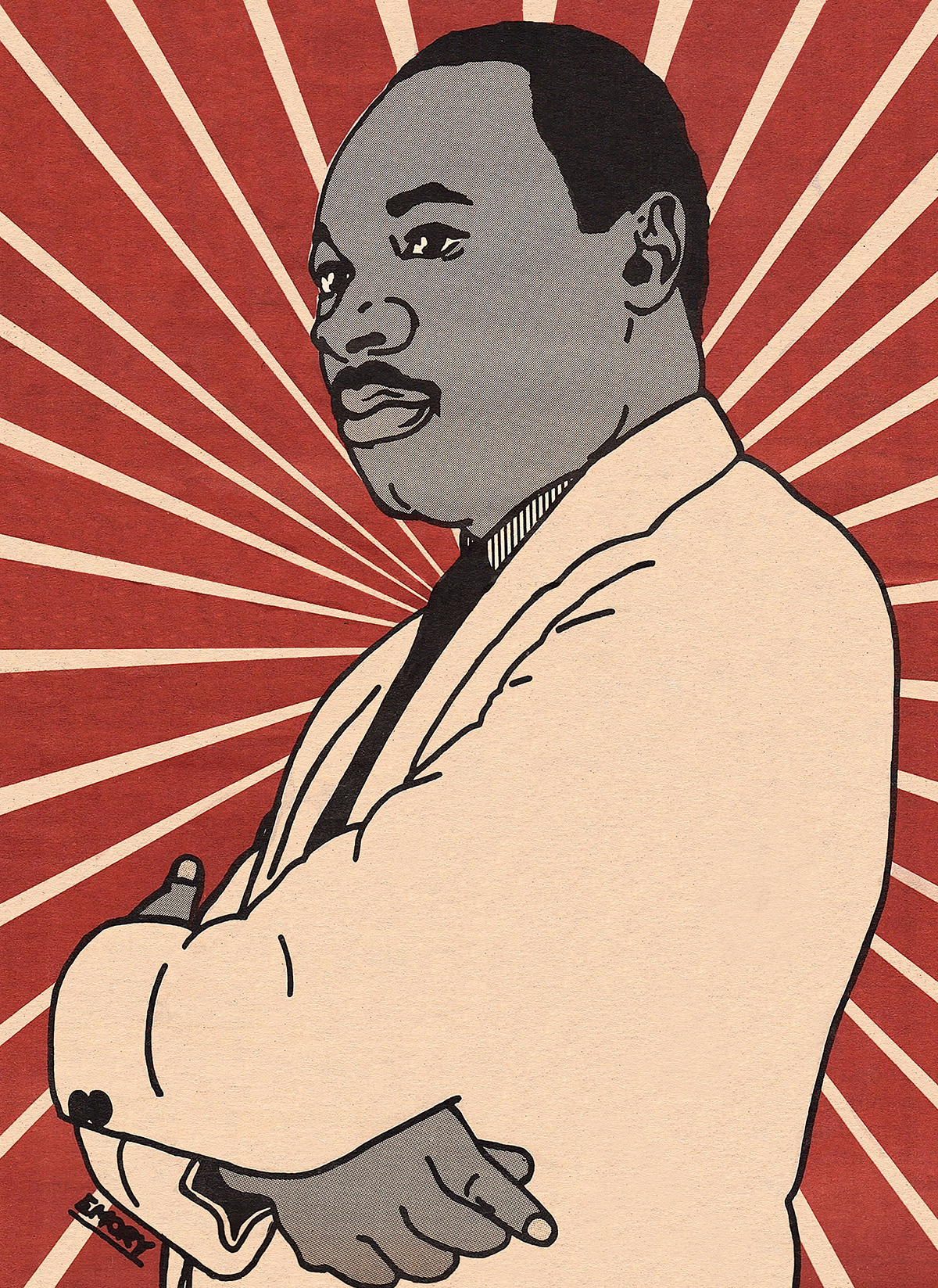
STOCKBRIDGE, Mass. – Imprinted: Illustrating Race, on view at the Norman Rockwell Museum through October 30, examines the role of published images in shaping attitudes toward race and culture. More than 300 artworks and objects of widely-circulated illustrated imagery are on display, produced from the late 18th century to today, which have an impact on public perception about race in the United States. The exhibition explores stereotypical racial representations that have been imprinted upon us through the mass publication of images. It culminates with the creative accomplishments of contemporary artists and publishers who have shifted the cultural narrative through the creation of positive, inclusive imagery emphasizing full agency and equity for all.
Co-curated by University of Delaware Professor of Visual Communications, and Interim Director of the MFA in Illustration Practice program at Maryland Institute College of Art (MICA), guest Curator Robyn Phillips Pendleton, who has written and spoken widely on the theme of this exhibition; and by noted scholar in American illustration, the museum’s Deputy Director and Chief Curator Stephanie Haboush Plunkett. They are joined by a distinguished National Exhibition Advisory Committee of 10 academic scholars, curators and artists with expertise related to the focus of the exhibition’s thesis.
“Norman Rockwell Museum is dedicated to the art of illustration and to examining the influence of widely published imagery on society,” said Stephanie Haboush Plunkett. “Imprinted: Illustrating Race presents a revealing analytical study of challenging historical visual material that invites consideration of the ways in which what we see affects what we believe about humanity and our world. I am honored to work with Robyn Phillips Pendleton and our accomplished panel of advisors to bring this important subject to light.”
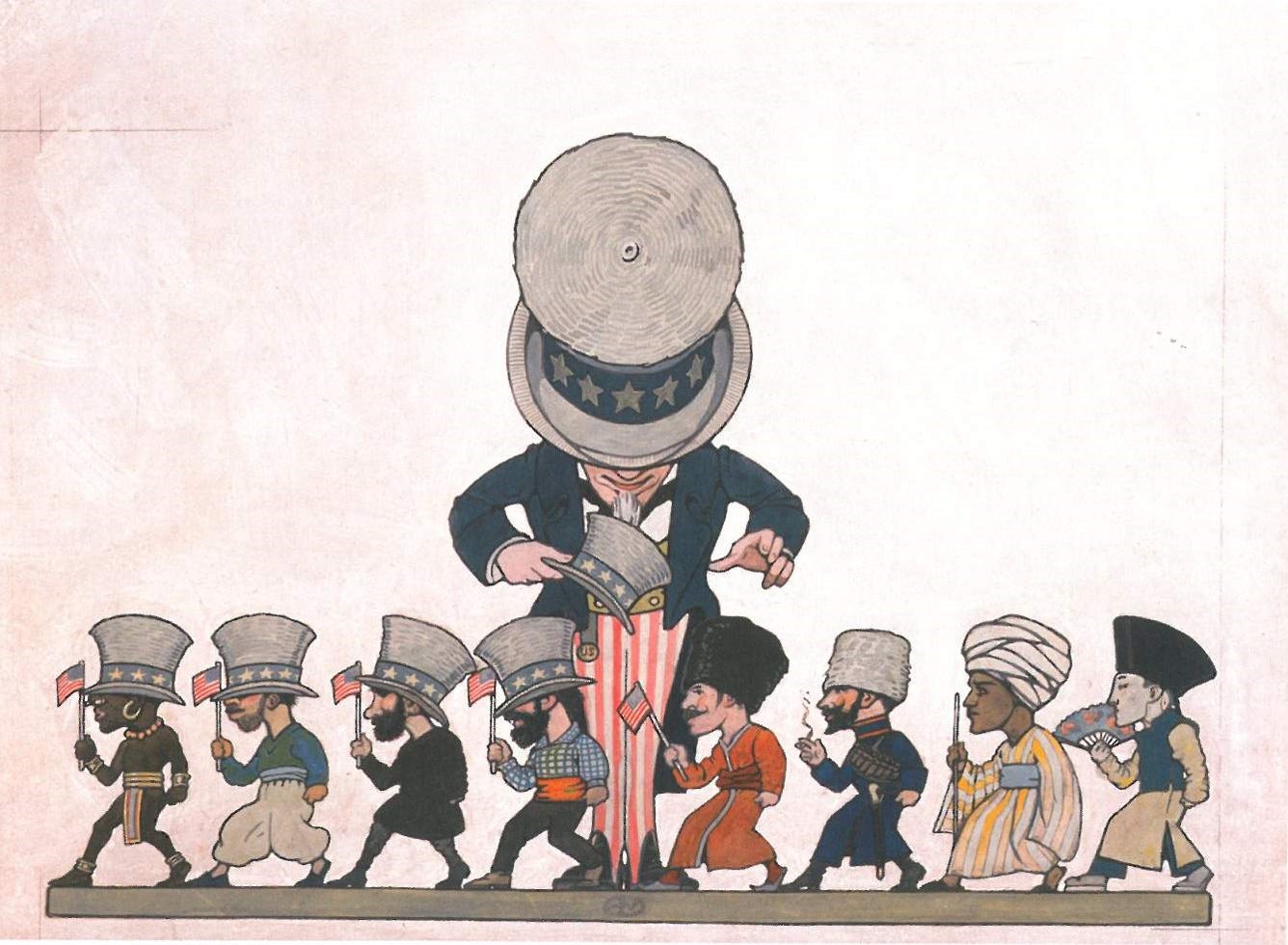
Illustration has been at the forefront of defining events in the United States from the Civil War and Reconstruction Era to the Harlem Renaissance and the Civil Rights Movements of the 1960s and today. Organized in three sections, the exhibition focuses on artwork commissioned by publishers and advertisers and created by illustrators, engravers and printers, as well as the work of contemporary creators that will spark dialog and raise awareness about the role of published art in reflecting and shaping beliefs and attitudes about race.
“I am thrilled to be working with Norman Rockwell Museum and a part of this groundbreaking illustration exhibition that highlights the perception and advancement of race through artwork. This exhibition promotes new ideas through imagery that celebrates, normalizes and facilitates inter-cultural tolerance,” says Robyn Phillips Pendleton.
The opening segment of the exhibition examines the history of racial stereotypes in illustration, sanctioned in publishing from the 18th to the early 20th century. The roots of damaging and provocative representations of race through the construction of cultural identities of African Americans, Native Americans, Asian Americans and immigrants from across the world, and the role of illustration as a powerful vehicle in the process, is explored.
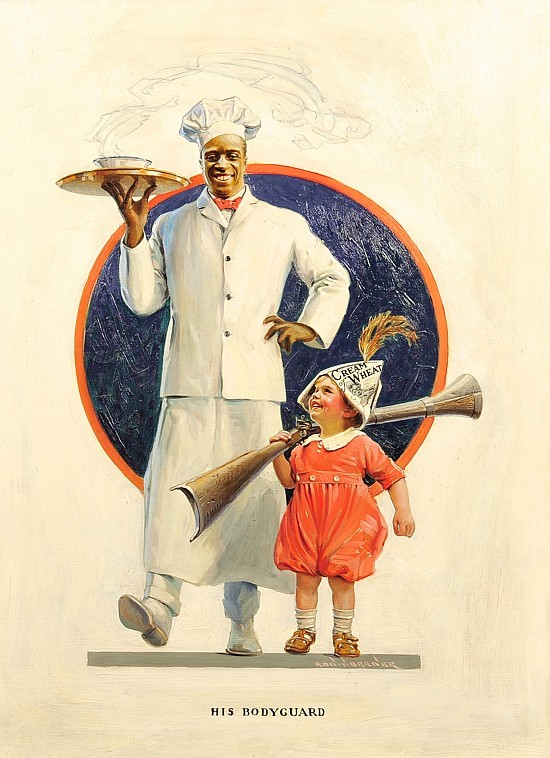
Illustrations from Harper’s Weekly, Puck Magazine, Frank Leslie’s Illustrated Newspaper, The Saturday Evening Post and a range of advertising campaigns, including the Cream of Wheat and Aunt Jemima brands, depict prevalent demeaning portrayals of people of color before, during and after the Civil War. Illustrations by Hammatt Billings, George Cruikshank and others for such literary works as Uncle Tom’s Cabin show shifts in perspective and character design, also seen in the propagation of theater posters, advertising and magazine illustrations relating to Harriet Beecher Stowe’s famous narrative.
White people produced these materials for white consumers, who were the perceived audience for publications and products. This section of the exhibition will also feature materials created to combat negative perceptions. William J. Wilson published the “Afric-American Picture Gallery” under the name of Ethiop in the Anglo-African Magazine. In 1853, Frederick Douglass’ Paper printed a letter from Wilson where he discussed his recent trips to art galleries in New York City. He commented on the lack of “distinguished black” images and figures in the galleries, concluding, “we must begin to tell our own story, write our own lecture, paint our own picture, chisel our own bust.”
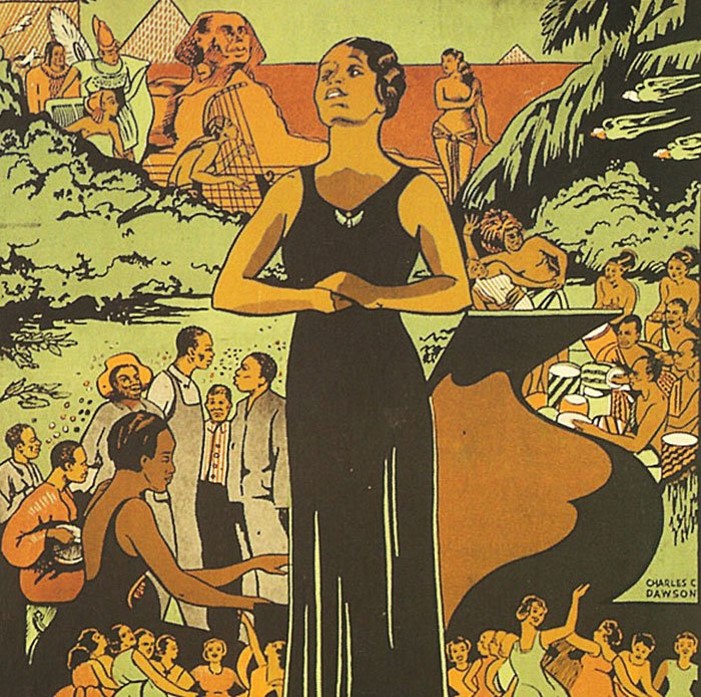
The exhibition moves forward to explore the artistic outpouring of multi-faceted cultural activities by African Americans in reaction to oppressive racial profiling and Jim Crow laws. The Harlem Renaissance (also known as the New Negro Movement) inspired pride in Black life and identity following World War I through the Great Depression. Artists associated with the movement conveyed a rising consciousness of inequality and discrimination, and an interest in the rapidly changing modern world, many experiencing a freedom of expression through the arts for the first time.
This segment of the exhibition focuses on the significant contributions of illustrators of the Harlem Renaissance, an intellectual, social and artistic explosion that took place in Harlem, as well as new African American cultural expressions across urban areas in the Northeast and Midwest United States, affected by the Great Migration, which brought hundreds of thousands of African Americans to cities such as Chicago, Philadelphia, Detroit, Cincinnati, New York, Washington, D.C. and Boston.
The Harlem Renaissance ushered in a new focus on African American arts andmade unprecedented opportunities available for female artists, and the new African American magazines of the time were the best prospects for women to publish their work. The two largest national journals that employed African American women as freelance illustrators were the National Association for the Advancement of Colored People (NAACP)’s magazine, The Crisis, which founding editor W. E. B. Du Bois launched in 1910, and the Urban League’s Opportunity Magazine, begun in 1923.
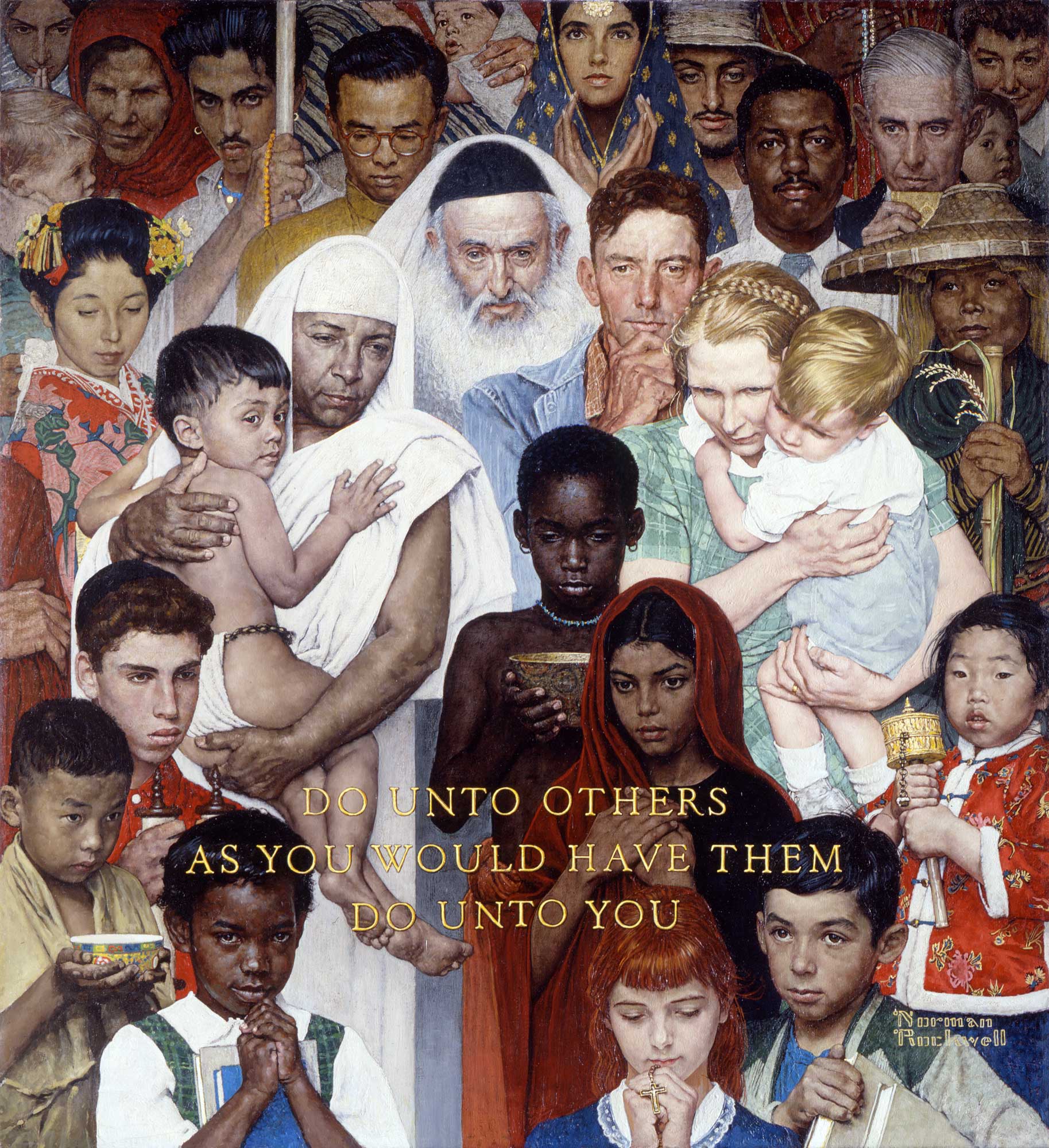
Norman Rockwell (1894-1978), ‘Golden Rule,’ 1961. Oil on canvas.Cover illustration for The Saturday Evening Post, April 1, 1961.Collection of Norman Rockwell Museum. ©1961 SEPS:Curtis Licensing, Indianapolis, IN. All rights reserved
Works by Charles Alston, Gwendolyn Bennett, E. Sims Campbell, Aaron Douglas, James Lesesne Wells, Norman Lewis, Lois Mailou Jones, Archibald Motley, Jr. and Laura Wheeler Waring are featured and compared with illustrations created for white readers of The Saturday Evening Post, Ladies’ Home Journal, Cosmopolitan and other popular 20th-century publications.
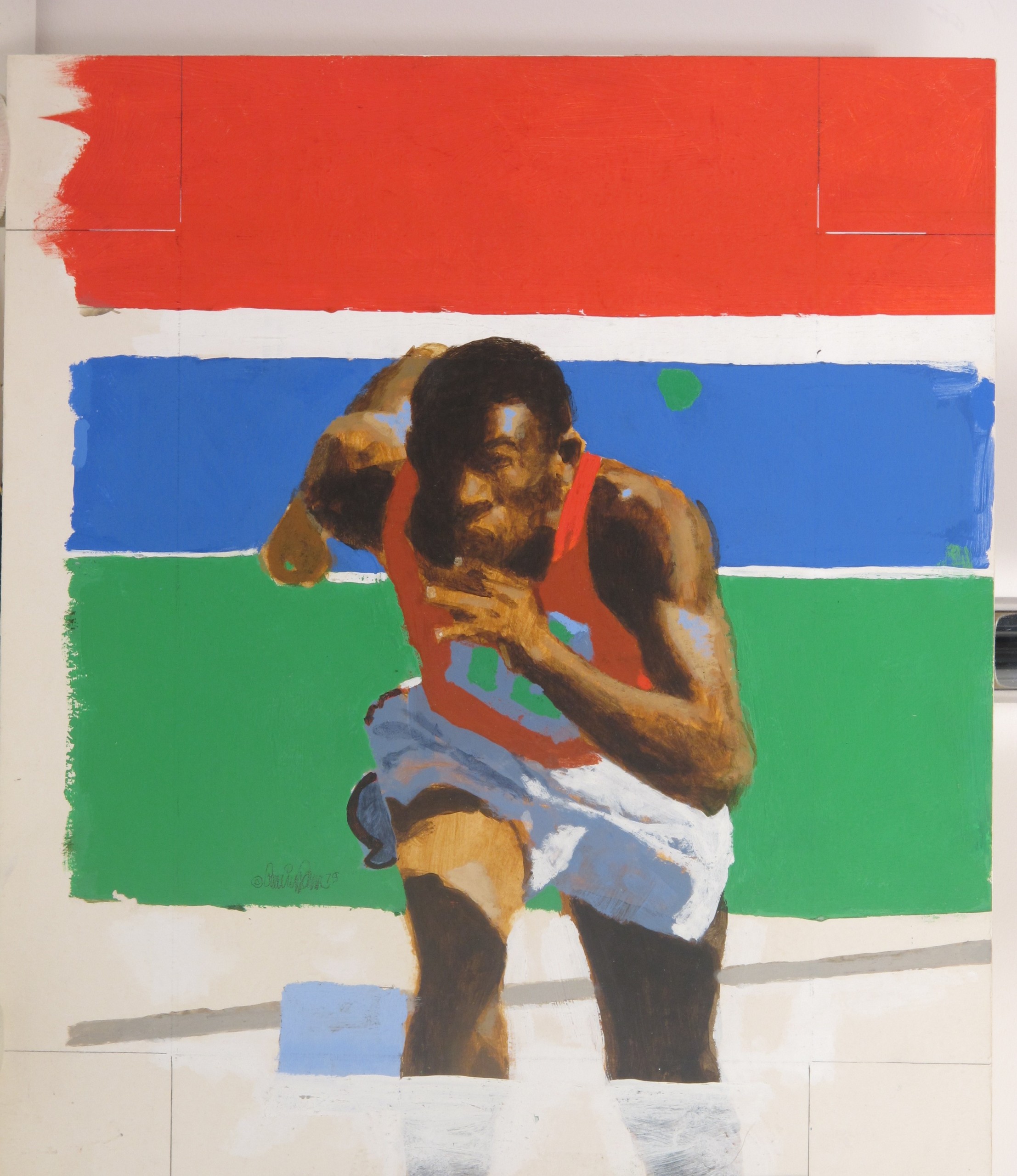
Illustration, Race, and Responsibility: 1950s to Now explores activism through art from the Civil Rights movements of the mid-20th century to the racial unrest of the present day. Recognizing that illustration and mass media had established divisive narratives – illustrators, editors, publishers and advertisers became more aware of their responsibility to feature equitable and authentic representations of race.
This exhibition section highlights the art of noted illustrators who have worked proactively to create respectful and inclusive images to convey a sense of hope and cultural pride for a new generation from the Civil Rights Movement and moving forward to the newspaper, periodical, picture book and digital images of today.
![Loveis Wise (b. 1995-), ‘Nurture [detail],’ 2018. Cover illustration for The New Yorker, June 2018. © 2018 Loveis Wise. All rights reserved.](https://www.liveauctioneers.com/news/wp-content/uploads/2022/08/LoveisWise_Nurture_Detail.jpg)
Posters, magazine and book illustrations by Harvey Dinnerstein, Emory Douglas, Barbara Jones-Hogu, Jacob Lawrence, Tyrus Wong, and many contemporary practitioners, including Alex Bostick, Rudy Gutierriez, Hollis King, Kadir Nelson, Jerry Pinkney, James Ransome, Faith Ringgold, Shadra Strickland and Loveis Wise are featured.
Visit the website of the Norman Rockwell Museum and see its dedicated page for Imprinted: Illustrating Race.


